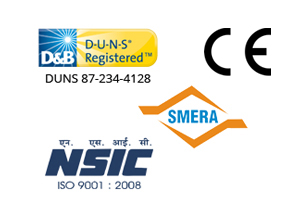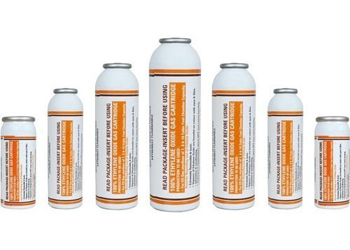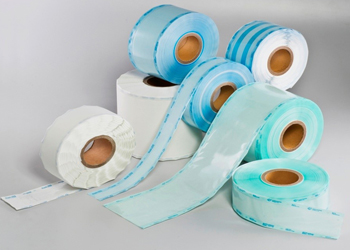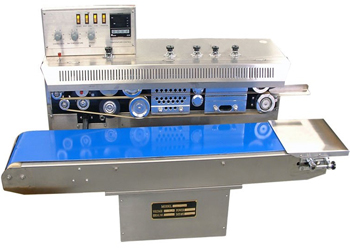Objective
This article delivers a focused, technical overview of the interesting latest insights in ETO sterilizer systems and practices, emphasizing new trends in smart monitoring, chamber design, microbial validation, automation, low-temperature processes and computational modeling. It aims to inform professionals working with ethylene oxide sterilizers about recent technological innovations and methods that may define the future of sterilization operations.
Introduction:
As medical technologies evolve and the demand for sterile instruments increases, ethylene oxide sterilization remains a widely used method – particularly for heat- and moisture-sensitive devices. While the process itself has decades of proven efficacy, significant technological strides are reshaping how ETO systems are operated, monitored and optimized.
Modern ETO sterilizers now include intelligent features that incorporate automation, advanced chamber designs and predictive data analytics. These improvements address not only performance and safety but also the need for operational efficiency in high-demand environments. Whether used in hospitals or industrial settings, the ETO sterilizer process is undergoing a transformation that aligns with broader trends in digital healthcare and precision engineering.
Smart Monitoring Systems in ETO Sterilizers:
The integration of smart monitoring systems into ETO sterilization machines marks a major development. These technologies allow the sterilization process to be monitored, adjusted and validated with unprecedented accuracy.
Key Functionalities:
- Real-time condition monitoring of humidity, temperature, gas concentration and pressure levels
- Predictive maintenance, using machine learning to forecast part wear and schedule servicing
These intelligent systems can analyze data from thousands of sterilization cycles, identify patterns and suggest improvements. Operators using EO sterilizers equipped with these technologies may also receive automatic alerts when deviations occur, minimizing the risk of compromised sterility.
As more sterilizer machines adopt cloud-connected architectures, facilities may standardize reporting and ensure global compliance more efficiently. The seamless integration of AI and IoT into ETO systems is likely to become a baseline requirement in advanced healthcare and pharmaceutical sterilization operations.
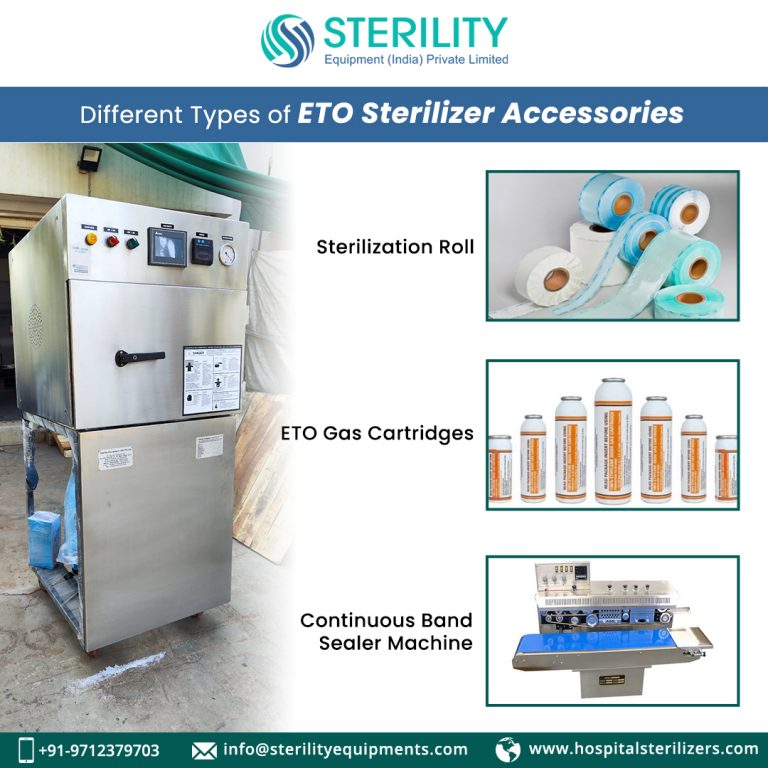
Ethylene Oxide Sterilization: Innovations in Chamber Design for Energy-Efficiency
Recent engineering efforts have also focused on improving the physical design of ETO sterilizer chambers. The goal is to create structures that support faster cycles, more uniform gas distribution and reduced energy usage.
Notable design innovations include:
- Improved airflow modeling, allowing better EO gas penetration and reducing the need for prolonged exposure
- Double-jacketed walls for precise temperature control and energy conservation
- Smart insulation materials, maintaining internal stability with lower energy demand
- Gas recirculation pathways, allowing partial reuse of EO gas within safe limits
These design changes can significantly impact operational efficiency. For instance, an optimized chamber can maintain temperature and humidity levels more uniformly, enabling faster preconditioning and more effective aeration phases.
Hospitals or facilities looking for compact yet efficient hospital sterilizers may benefit from these innovations, as they reduce operational costs and cycle times while maintaining high sterilization standards. Moreover, as the ETO machine price is influenced by performance features, such enhancements may justify higher initial investments through long-term savings.
ETO Sterilizers: Microbial Validation and Cycle Optimization Using Predictive Algorithms
The ETO sterilizer process must achieve a high Sterility Assurance Level (SAL), which means thorough microbial validation is essential. Traditionally, this process involves biological indicators and empirical data. However, the use of predictive algorithms now allows for more refined control over cycle parameters.
Applications of predictive tools include:
- Modeling microbial inactivation rates under various temperature, humidity and EO concentration conditions
- Estimating gas exposure times required for specific microbial loads
- Simulating worst-case scenarios for load density and packaging permeability
By integrating predictive models, ETO systems may pre-calculate optimal sterilization cycles for different product types. This can reduce the need for repetitive testing and improve turnaround times. These tools also help reduce the risk of overprocessing, which can affect sensitive device materials. Advanced validation supported by predictive software can significantly enhance the precision of ethylene oxide sterilization, especially for complex devices with intricate geometries or mixed materials.
Automation and Remote Supervision in Next-Generation ETO Sterilization Facilities
Automation is playing an increasingly central role in modern ETO sterilizer operations. Manual processes are gradually being replaced by robotic and sensor-based systems to ensure consistency and minimize human error.
Features commonly automated include:
- Loading and unloading cycles via robotic arms or conveyor systems
- Automated chamber sealing to maintain EO containment
- Programmed sterilization cycles, managed through centralized software
- Real-time performance logging, supporting regulatory audits
Remote supervision capabilities allow technicians to monitor and control ETO sterilization machines from control rooms or even external sites. This is especially useful in large manufacturing plants where multiple sterilizer machines operate simultaneously.
Such automation does not only increase throughput but also supports consistent compliance with safety regulations. This is crucial in industries where deviation from established protocols can result in product recalls or safety incidents.
Facilities investing in automated ethylene oxide sterilizer machines may also gain the ability to rapidly scale operations without a proportional increase in labor requirements.
Low-Temperature ETO Sterilization for Heat-Sensitive Biomedical Devices
One of the most critical trends in ethylene oxide sterilization is the development of low-temperature EO sterilization methods. These are particularly important for sterilizing biomedical products made from plastics, polymers and delicate electronics that cannot withstand high heat or moisture.
Key components of low-temperature sterilization include:
- Tighter environmental controls on humidity and gas concentration
- Extended exposure times at lower temperatures to maintain SAL
- Modified packaging materials, allowing EO penetration without heat degradation
This trend is particularly relevant in the context of complex medical devices such as catheters, implantable sensors or multi-layered diagnostic tools.
Manufacturers and healthcare providers using ETO systems for these sensitive products must validate their cycles under these new conditions. This may also impact eto machine price, as new configurations and controls are required to support low-temperature capabilities.
Nonetheless, this adaptation ensures that a broader range of devices can be sterilized using EO while preserving their structure and function.
ETO Gas Diffusion and Sterility Assurance: Role of Computational Modeling
Computational modeling is becoming a crucial tool for understanding how ethylene oxide gas behaves inside a sterilizer chamber. These models simulate how gas diffuses across different packaging types, product densities and chamber geometries.
Benefits of computational modeling include:
- Improved sterility assurance by identifying dead zones or areas of poor gas penetration
- Enhanced chamber design, informed by airflow and diffusion simulations
- Accelerated validation by reducing the need for extensive empirical testing
These models may combine physical gas behavior data with microbial kill curves, offering a more comprehensive view of the ETO sterilizer process. Simulation tools can be customized for specific sterilization loads, improving cycle efficiency and reducing material stress.
In practice, these insights help ensure that the entire product load is consistently exposed to sterilizing conditions, even in complex configurations. As a result, computational modeling is becoming an essential feature in the design and operation of next-generation ETO sterilization machines.
Conclusion
The world of ethylene oxide sterilizers is evolving rapidly, driven by the convergence of digital technologies, materials science and microbiological engineering. From smart monitoring systems to AI-driven predictive modeling and low-temperature sterilization cycles, the innovations reshaping the ETO sterilization are deep and multifaceted.
Each improvement, whether in chamber design, automation or validation, reflects a growing demand for precision, safety and efficiency. While the core principle of EO sterilization remains the same – using gas to achieve deep microbial inactivation – the tools and methods used to execute this process are becoming more sophisticated.
As healthcare and medical device industries continue to expand, the ETO system will remain integral to ensuring product safety and sterility. However, only those facilities that adopt and adapt to these latest insights will fully realize the potential of modern ETO sterilization equipment.
By understanding and implementing these advancements, operators, technicians and facility managers can confidently manage the demands of today’s sterilization needs while preparing for tomorrow’s challenges.

